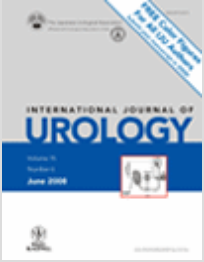
MASANORI IGUCHI (1), YOSHINARI KATOH (1), HIROYUKI KOIKE (1), TAIJI HAYASHI (1), MASATO NAKAMURA (2)
Departments of (1) Urology and (2) Anesthesiology, Kaizuka City Hospital, Osaka, Japan
International Journal of Urology (2002) 9, 475–479
Abstract
Background
Many drugs have been utilized for the treatment of renal colic, but to date no drugs that relieve pain quickly and completely have been developed. Thus, we conducted a prospective trial to evaluate the effects of trigger point injection on renal colic. In this study, we used a local injection of lidocaine to the trigger point of patients experiencing renal colic, and evaluated the efficacy in patients using the visual analog scale.
Methods
Sixty patients with renal colic were enrolled in this study and divided into two groups by a simple randomization: (i) the butylscopolamine group (n = 30, intravenous injection of butylscopolamine bromide and sulpyrine); and (ii) the lidocaine group (n = 30, local anesthesia to the trigger point with lidocaine).
Results
Renal colic had disappeared completely at the end of the trigger point injection in 15/30 patients and the average time required to produce a 50% improvement in symptoms was 9 min in all patients in the group. In the lidocaine group, only one patient needed an additional anodyne treatment after 60 min and none of the 29 patients whose pain disappeared within 60 min needed further anodyne treatment within 24 h. These results were all significantly superior to those of the conventional treatment. No side-effects and complications were observed.
Conclusion
Trigger point injection, in our experience, is an easy, safe and effective method for the amelioration of renal colic. It was significantly superior to the combination of intravenous butylscopolamine and sulpyrine.
Key words : renal colic, trigger point, trigger point injection, visual analog scale.
Full text (FREE)